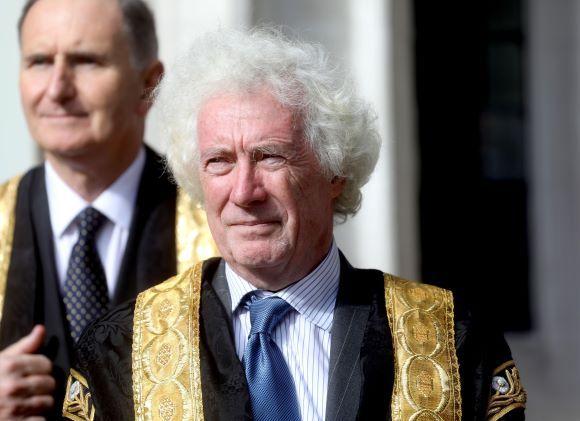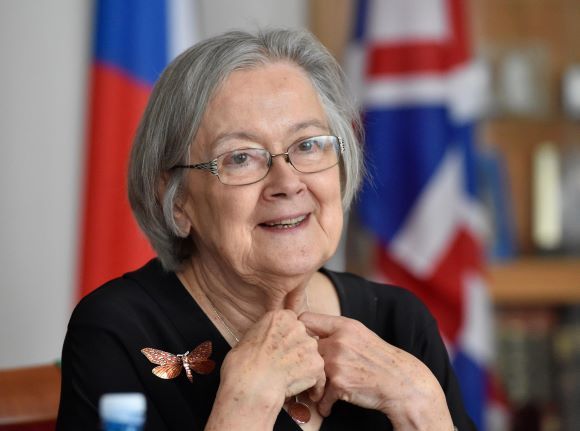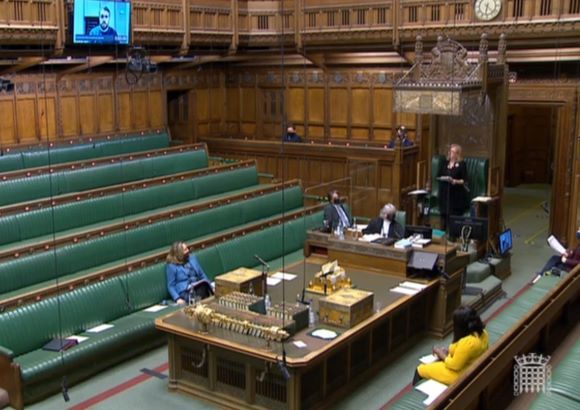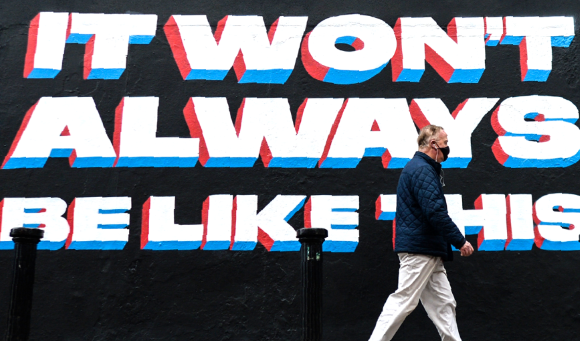How quickly does freedom die? A strange question to ask in a country that thinks of itself as blessed with venerable and supremely liberal constitutional arrangements. And certainly not one the self-styled Churchillian in No 10 expected to be facing when he won a huge majority in 2019 and proceeded to “break free” from Europe. And yet.
For much of Boris Johnson’s premiership, most British citizens have been locked in their homes, parliament has been marginalised, and the right to protest has been suspended by a public health emergency. Perhaps the most visceral evidence of our loss of liberty came when the country was confronted with the sight of the Metropolitan Police manhandling peaceful participants in a vigil for murdered Londoner Sarah Everard. Two days later, on 15th March, the government pushed through measures that give police powers to permanently limit such assemblies.
The question is fast becoming: how quickly can you resurrect freedom? Or is that impossible when the authorities have grown too comfortable with the public living without it?
There is a seductive argument we have heard throughout history: that democracy, and the civil liberties that underpin it, are “peacetime niceties.” History teaches us that the opposite is true: these things are even more essential during times of upheaval. Cuts to our democracy leave scars, and once normality returns, the deepest cuts may never heal. Many emergency powers have ended up remaining in place beyond the emergency that originally justified them. Just look at the post-9/11 anti-terrorism laws and associated intrusive state surveillance, which have become permanent even as that threat has receded. The extraordinary things that have happened in the last year were justified by the necessity of saving lives and protecting health during a deadly pandemic, which has killed over 100,000 people. But it is dangerous to be complacent about the costs. In this moment, the first precondition for restoring our liberal constitution is fully understanding the battering that it has just endured.
Shock therapy
On Monday 23rd March 2020, at 8.30pm, Johnson addressed the nation. He had a “very simple instruction”—“you must stay at home.” This was, for all of us, and probably for the prime minister himself, shocking. For weeks we had watched the deadly coronavirus circle ever closer, but the government seemed to be taking a lax approach. It hoped that herd immunity would be enough to save us without recourse to the draconian response seen in China, or what some in the press described as the “continental-style lockdowns” closer to home in Italy, France and Spain. The first UK death had been recorded on 6th March but, as late as the 12th, the prime minister insisted that less intrusive measures could “contain” the virus. “At some point in the next few weeks” households where someone had symptoms would be asked to isolate; major public events might have to be banned. No mention was made of a general lockdown.
On the 23rd, everything changed—and nobody seemed more caught off guard than the government. The prime minister said that if people did not follow the rules “the police will have the powers to enforce them,” but the laws that would be needed to enforce lockdown were not yet ready. They would not arrive for three days. In keeping with his “essay crisis” mode of governance, it was only on the day of Johnson’s announcement that work started on the legal instrument to enforce it.
The law ultimately put in place was radically different to any other in English legal history. (I focus here specifically on England; the tale for the UK as a whole is even more tangled as devolved governments in Scotland, Wales and Northern Ireland have run their own separate lockdowns.) Matt Hancock, the health secretary, is said to have called it “Napoleonic.” The law, he reportedly observed, would reverse the usual presumption that whatever was not unlawful was permitted; under the lockdown laws “people would be forbidden from doing anything unless the legislation said, in terms, that they could.”
By the stroke of a pen
The easier it is for freedoms to be taken away, the greater the temptation to limit them again in future. So how were such astonishing restrictions accomplished? You might have thought that the most draconian laws in English legal history would be closely considered in parliament, but that was not to be. A government which had, only months before, unlawfully prorogued (closed) the legislature was not going to be held back by such niceties as debates and primary legislation.
This was even though the natural vehicle for lockdown powers—the Coronavirus Act 2020—was accelerating through parliament in the same week as Johnson’s broadcast. While the Act did include parts relating to restrictions on gatherings and school closures it had nothing that could be used to enforce a general lockdown.
Instead of amending the bill, however, the government decided to impose lockdown through secondary legislation—regulations made by ministerial decree—under the Public Health (Control of Disease) Act 1984. Although little known, it had a troubling history: a scene in Russell T Davies’s recent television show It’s a Sin shows a young Aids sufferer in the 1980s being detained under regulations made using the same law. By 2020, the Public Health Act had become a different, and potentially fiercer, beast.


For one, its reach was no longer limited to quarantining infectious people; in 2008, sweeping new powers had been inserted by parliament following the Sars outbreak. The new “Part 2A” gave a minister the power to make regulations “for the purpose of preventing, protecting against, controlling or providing a public health response to the incidence or spread of infection or contamination in England,” including restrictions on gatherings, travel, children attending school and almost unlimited requirements “on or in relation to persons, things or premises.” And if the minister declared that “by reason of urgency, it is necessary to make the order without a draft being so laid and approved” by parliament, it would be possible for there to be no parliamentary scrutiny or approval for 28 days after the law had come into force.
Some spotted worrying potential at the time. Then on the opposition benches, the Conservative peer Frederick Curzon remarked as the 2008 legislation was being debated that ministers “by regulation, are being given considerable power to limit and constrain the daily lives and freedoms of citizens,” which they “can bring into force more or less at the stroke of a pen.” But nobody imagined unscrutinised emergency regulations being used to impose a blanket ban on all gatherings of more than two people, protests apparently included, and to prevent everyone in England leaving their homes without a “reasonable excuse.”
The first set of lockdown regulations arrived on Thursday 26th March. Although this was, in the subsequent words of a Court of Appeal judge, “possibly the most restrictive regime on the public life of persons and businesses ever,” the law took up just 11 pages. It was simple, almost elegant. Three things were prohibited: leaving home without a “reasonable excuse,” gathering in groups of more than two except in certain very limited circumstances, and the opening of what the government described as “non-essential” businesses. These three rules were enough to criminalise most of what we think of as day-to-day life.
Meanwhile the powers of enforcement Johnson promised had arrived, and they were extensive. The police—and indeed any “relevant person,” which could also include anyone designated by local authorities or the health secretary—could “take such action as is necessary,” impose fixed penalty notices, direct people to return home, use reasonable force to take them there and refer matters for charging.
Beyond questions
The first fortnight after the WHO declared the pandemic on 11th March was inevitably a time of administrative scrambling. Ministers vowed to “follow the science,” but with a new, fast-moving virus this science was uncertain; no doubt the normal parliamentary rancour seemed inconvenient. But over the long months since, as the challenges became more familiar, the regime continued to evolve in a needlessly peremptory and increasingly chaotic way. Indeed, two troubling patterns emerged on 26th March that have been repeated time and again over the subsequent year, as the lockdown regulations were amended 70 times, on average every five days.
First, last-minute legislating became a habit. New laws limiting the most basic social activities would regularly appear late in the evening on the day before they came into force. Generally they were in the form of a practically impenetrable PDF document, listing changes to previous legislation in opaque language such as: “(aa) at the end of sub-paragraph (ii), insert “or.”” This was the very “stroke of a pen” that Howe feared being wielded to strike lines through liberty, and in ways that nobody except lawyers could comprehend. As for the lawyers, very few of us have got the time. Indeed a joke immortalised in Hansard has it that as a barrister who has obsessively tracked and tried to explain the shifting sands of lockdown on Twitter, YouTube and in the media, I may now be the only person in the country “who can make sense of this variety of regulations.” When I was at law school, I never dreamed I would be having to explain to Piers Morgan on national television whether it was illegal to sit on a park bench.
Secondly, the “emergency” procedure that potentially avoided any parliamentary scrutiny until at least four weeks later would be used in every set of regulations that followed, not only to tighten but also to relax restrictions—and even when such relaxations had been in prospect for weeks. Only twice—with the November lockdown and the principle of establishing the “three tiers”—has parliament voted before new rules came into effect, and in both these cases it was only one day before.
No matter how grave the breach of civil liberties, there was no presumption of scrutiny: the introduction of compulsory detention of travellers from “red list” countries—children included—in “hotels” run by private security firms was not debated or authorised in advance by parliament. And because all the rules are secondary legislation—take-it-or-leave-it regulations served up from the ministers’ desks—there was never any prospect of amendment, and hardly any debate worth having. Brenda Hale and Jonathan Sumption, former Supreme Court justices who are sometimes caricatured as disagreeing with each other about everything, have both made the point that the timing of restrictions close to recess has further curtailed the scope for scrutiny. Most MPs actually supported the thrust of the strategy: they were never going to vote it down. No: the government’s systematic bypassing of parliament has seemed designed instead to stymie scrutiny, and remove the opportunity for MPs to examine the all-important detail.
“Like the mythical beasts of our nightmares, misrule is something that thrives in the dark”
Ordinarily, it is hard to complain about “Henry VIII” clauses or appeal for better parliamentary procedure without sounding pernickety or being accused of focusing on process not substance. But the last 12 months have shown why the sticklers might be worth listening to. We supposedly live in an advanced liberal democracy, but it is surely profoundly illiberal and anti-democratic to legislate away our most basic liberties by fiat. Parliament would have been up in arms if this possibility had been advertised in 2008. It should have horrified parliament this last year, too, but MPs—like proverbial slow-boiled frogs—have incrementally become resigned to their diminished role. MPs are now so supine they have practically prorogued themselves.
The result is that the government has done breathtaking things—ranging from the almost total ban on physical relationships between consenting adults who don’t live together, to the possible abolition of the right to (even socially distanced) protest—before anyone can ask questions. The shocking events following Sarah Everard’s death bring home the point (for transparency: I am acting for the women who organised the original vigil). In a democracy, the right to protest is fundamental. The government has been advised that the risk from outdoor transmission at protests is low—if it wanted to limit protest it should have established clear principles that would allow it to happen safely. The police should not be picking and choosing which protests they permit on a whim. When that happens—as some warned, and everyone can now see—we end up with women being dragged away screaming from a solemn vigil. When parliament is sidelined and protest is banned, the threat to democracy is doubled.

End in tiers
Like the mythical beasts of our nightmares, misrule is something that thrives in the dark. The processes of law-making have become so opaque we have almost no insight into the logic behind some decisions, and not all appear to have been made in the public interest. Witness the clear corruption of exceptions being inserted into the rules to allow some prominent figures in elite Conservative circles to continue shooting grouse, a story we only know through a press leak.
More generally, when the authorities have no need to answer questions, they have no need to explain themselves, and can ultimately end up losing track of what they are doing themselves. Through a mixture of law, guidance and ministerial pronouncements, the lockdown rules have slowly swelled to a bloated and incomprehensible mess.
The first lockdown law, all 11 pages of it, was harsh but straightforward. You could leave home for 13 listed reasons. The recent “All Tiers” regulations are 139 pages long and have 49 possible exceptions to the “stay at home” rule, in addition to myriad kinds of “linked households” (or “bubbles”) as well as hundreds of pages of guidance, some of which bears no relation to the law.
The tinkering has never stopped, as the government has tried a range of tactics to suppress the virus, while also seeking—with varying enthusiasm—to balance economic imperatives and civil liberties against this aim. Like an over-eager software developer making changes to an app, ministers have moved key features so that users can no longer find them, and issued complete redesigns with no warning or instructions on how to use the new version.
The evolution has been dizzying—so bear with me. The first lockdown ended on 1st June. Well, it ended in a sense. It was no longer a criminal offence to leave home without a “reasonable excuse.” But through the summer, there were now bans on gatherings of more than two indoors; meanwhile, outdoors, a “rule of six” switched the regulatory unit from “households” to persons. From July, stricter rules arrived for certain areas, beginning with Leicester. September saw new regulations mandating masks and, for the first time, a legal requirement to self-isolate. As autumn approached, England was enmeshed in a latticework of rules, with areas added and removed from stricter restrictions every few days, in 25 successive sets of local regulations.
It was all becoming impossible to follow, so government moved to three infection-related “tiers.” Two weeks later the full “leaving home” restriction was needed again: the “three tiers” were repealed and replaced by a second national lockdown, but—with schools open and a long list of odd exceptions, such as for Remembrance Sunday events of any size—it was very different from the first. Next, on 2nd December, came “three tiers, mark 2”: over 70 pages of regulations and 30,000 words for the police and public to understand, including the ill-fated “Christmas linked households” scheme, soon scaled back in some places and scrapped in others. Within three weeks, a more fully locked-down “tier four” was added. After two more, it was made more restrictive again. Then on 6th January, one day after the government had sent children back to school, lockdown three was achieved by placing the whole of England within tier four.
Now, as the vaccine rolls out, we have a “roadmap” out of lockdown, supported by a new set of regulations that confusingly replace “tiers” with “steps.” But this lockdown relaxation is accompanied by other serious interferences with rights that are not time limited: for example the proposal that vaccines will be a “passport” to get a drink at the pub, and for the first time an explicit ban on travel outside of the UK without a reasonable excuse.
The fuzz
Our three national lockdowns were swiftly followed by a fall in infections. I am no epidemiologist and do not, here, seek to go behind the relative consensus that they had some effect. What we must guard against though is the next, and false, step in the argument: that seeing as the rules in one sense “worked,” there’s no need to worry about the cavalier and incomprehensible way in which they were made. Despite the old adage about politics, we must face up to how this sausage was made.
It is no joke when lack of understanding extends to the police who are meant to enforce the rules, and people end up with unfair financial penalties or criminal convictions, as has regularly been reported—for example the two walkers who were given fixed penalty notices because the coffees they were holding were considered a picnic. In that case, there was publicity that led to the punishment being withdrawn, following which the police were bizarrely supported by the health secretary. But in many others, unfair punishments have been quietly endured.
Rules for outdoor exercise are a good example of the insidious fuzz created by making the guidance stricter than the law. At no point in the crisis has the law for England set a limit for how often a person may exercise or how far they can travel to do so. The guidance has often included such a limit, for example during the latest lockdown. The government has never explained the disparity—my guess is it reflected a general (and during the peak infection rate, understandable) urge to discourage leaving the home.
While the public rarely understands the distinction between guidance and law, they certainly pick up on any sense of confusion about what they are being asked to do. A UCL study found that, during the March 2020 lockdown, 90 per cent of adults in the UK reported feeling they understood the rules; by August this figure was just 45 per cent in England. Even putting civil liberties aside, this surely damaged efficacy. The study pointed the finger at “conflicting rules across UK nations, frequent changes to rules, and confusion about dates.”
Those enforcing the rules seem just as befuddled. Parliament’s Human Rights Committee were recently told by the National Chair of the Police Federation that nine out of 10 officers felt the regulations were not clear. The latest Crown Prosecution Service figures show that a fifth of prosecutions under the regulations are incorrectly charged. And extraordinarily, of the 246 prosecutions under the Coronavirus Act 2020, every single one was found to have been wrongly charged, presumably because many police assumed, reasonably but wrongly, that the lockdown rules would be in the big parliamentary Act with “coronavirus” in its title.
There is, by contrast, no procedural check on fixed penalty notices. They cannot be appealed: the only way to challenge them is to not pay and risk prosecution. Ranging from £200 to £10,000, around 70,000 such notices have been meted out, and we’re left guessing how many these were issued in error. But given the wild variations in understanding by the police, it is safe to say that the mistakes will not have been trivial.
Many police have felt ill-at ease with the new and poorly defined public health role that they never sought. But a significant minority gripped it with the sort of abandon seen in Derbyshire where officers, without any obvious scientific rationale, targeted people travelling a few miles to beauty spots. I have been told by serving officers that they are “ashamed and embarrassed” at how some constabularies have behaved with “over-zealous” enforcement, that they despair at those “officiously chasing joggers,” and “cringe” at police attempting to enforce “guidance, not law.” Some police despair that “too wide” rules have become a “farce and pretty much unenforceable.” Morale has sunk, they say, because “everyone hates us.” One worried about “the need for public support, now and in the future.” The old Peelian ideal of citizens in uniform has taken a serious blow.

The new normal
As the real threat of the virus—finally, hopefully—begins to recede, can we go back to normal? In principle, of course we can. In practice, the first question is whether a virus that has never yet listened to politicians’ pronouncements will mutate in vaccine-resistant ways.
But at some point, presumably, science will get it under control. Will we then permanently restore the tenets of our liberal democracy? Or might we find that the authorities have developed a taste for their mighty new powers? Will politicians, having discovered the ease with which they can accrue more, make it a habit? And could “extraordinary” threats become a rather ordinary occurrence?
If these questions strike you as paranoid, remember that governing is always difficult. Even in routine situations, politicians and officials have to strike fraught balances between competing objectives, and trying to do a lot of complicated things at speed. Anything that promises to make their life more convenient is tempting: just look at the sweeping surveillance powers over our communications and internet use that were revealed by Edward Snowden in 2013; it transpired that the privacy of the citizen simply did not get a look in. For people tasked with surveilling security threats, a “just in case it comes in handy” approach to state powers is understandable. But theirs is not the only point of view that should be taken into account.
Pandemic law-making will have left an indelible stain on the rule of law and on the relationship between citizen and the state. The public has been left confused; the police have sometimes acted arbitrarily, and been shamed by recent events; and throughout, a radical contempt has been shown for parliamentary democracy.
As the government endlessly iterated and experimented, it has shown a worrying lack of concern for explaining exactly what it is doing and why. While most of the time it has seemed motivated by the sincere hope of containing the virus, this has not been entirely consistent; recall the 10pm curfew on pubs, which made for easy headlines but was seemingly unconnected to any serious scientific advice. The effective total ban on protest seems to have emerged not from scientific advice but the home secretary’s private instruction. Under government without explanation, an awful lot has to be taken on trust.
We have seen how fast the most basic of so-called constitutional “norms” can be jettisoned in a crisis. Come the next great threat, we have set the marker: parliament will not have a say and will hardly raise a whimper; decisions will be made on a whim by whichever person, however capricious, happens to be behind a particular ministerial desk. And remember, while the next crisis could be another virus that threatens the community as a whole and allows for a reasonably unifying political response, it could also be something very different, like a terrorist attack. In the cases of the Troubles in Northern Ireland and the “war on terror,” we saw that the response sometimes divided communities. In such circumstances it is especially important that everyone should be entitled to a voice, but nobody can have confidence that they will be heard if decisions are taken without discussion or debate.
In sum, we have discovered that our so-called unwritten constitution is simply too weak to protect our basic liberties. Now is the opportunity to rethink, and codify the ground rules of our freedoms, not for the mere sake of tidying things up, nor out of a desire to fossilise every protection. No: with the clear-eyed understanding that while freedom may occasionally need to be checked and balanced, this must, as I argued online for Prospect last April, always be temporary, proportionate, and—just as much—argued for and explained.
Whether it is another virus or something else, the next crisis will be here soon. We must heal the wounds inflicted on our liberties in the past year. If we don’t, they risk becoming fatal.
Images: James Veysey/Shutterstock, Dominic Lipinski - WPA Pool/Getty Images, PA Images / Alamy Stock Photo, Gavin Rodgers / Alamy Stock Photo, CTK / Alamy Stock Photo, Artur Widak/NurPhoto via Getty Images













